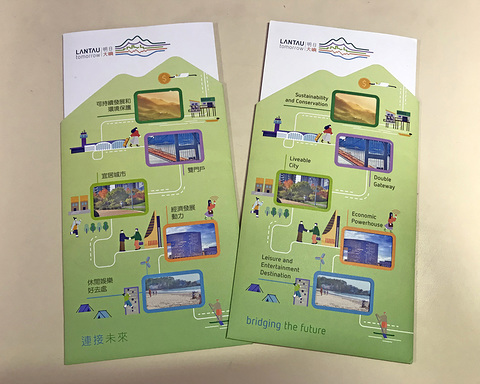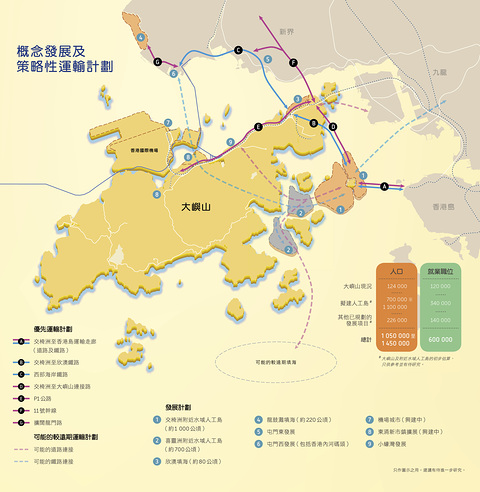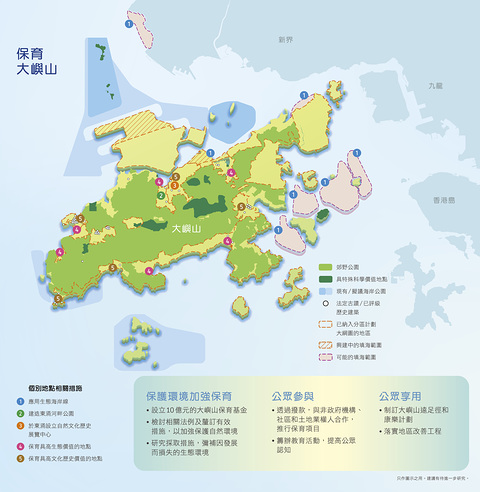For the sake of our next generation
31 March 2019
 |
 |
 |
It is an undisputed fact that there is insufficient land supply in Hong Kong. As pointed out by the Task Force on Land Supply, “there is no single option that can solve the overall land supply problem”, and only a “multi-pronged approach” would be a pragmatic strategy that meets the overall interest of Hong Kong. Fully agreeing with this, the Government will strive to take forward any proposal that can increase land supply.
The Lantau Tomorrow Vision (LTV) aroused heated discussions in society in the past few months. This past Tuesday (26 March), the Government consulted the Panel on Development of the Legislative Council (LegCo) on conducting a detailed planning and engineering study for forming artificial islands having a total area of about 1 000 hectares near Kau Yi Chau (KYC Artificial Islands) as well as related studies on strategic transport infrastructure. Some LegCo Members suggested that the Government explain the rationale and justifications for the LTV from multiple perspectives. Let me elaborate on the LTV here to help the community understand more about it.
Land formation by reclamation has all along been an important source of land supply in Hong Kong. As at 2016, there are about 7 000 hectares of reclaimed land, accounting for 25% of our built-up area and accommodating around 70% of our economic activities and nearly 27% of our population. Much of the land in the four new towns of Tsuen Wan, Tuen Mun, Sha Tin and Tai Po (developed in the 1970s) as well as that in Tseung Kwan O and Tung Chung (developed in the 1980s and 1990s respectively) was formed by reclamation.
Many facilities related to people’s livelihood, and cultural and commercial districts are also located on reclaimed land. Reclamation works in the past have contributed to the prosperity and development of Hong Kong nowadays. However, the pace of reclamation has slowed down in the recent decade, which has, to a large extent, caused the serious land shortage problem in Hong Kong today. During the period between 2000 and 2015, land created through reclamation totalled only 690 hectares. Compared to the corresponding figure of around 3 000 hectares between 1985 and 2000, the total area of reclaimed land was reduced significantly by around 2 310 hectares.
Some people queried that the LTV would exhaust Hong Kong’s fiscal reserve. Two weeks ago (on 19 March), the Development Bureau exceptionally 1 announced that the ballpark estimate of construction cost for the main projects proposed in the LTV (including KYC Artificial Islands and related strategic roads and rails) would be around $624 billion (in September 2018 prices). The construction works will be carried out in phases and the expenditure involved will be spread over a period of 10 to 15 years (i.e. an average of $40 billion to $50 billion per year). For the coming few years, the Government’s expenditure on capital works projects is expected to increase to over $100 billion per year. That said, Hong Kong is financially capable of delivering the LTV.
On the other hand, the Hong Kong Institute of Surveyors (HKIS) has earlier estimated that the land sale revenue to be generated from the private residential and commercial developments on the KYC Artificial Islands is about $974 billion to $1,143 billion. The HKIS’s estimate is based on the upper-end of the preliminary planning parameter for private residential development (i.e. 78 000 housing units). Even if the lower-end parameter (i.e. 45 000 housing units) is adopted for the calculation, the land sale revenue will still be as high as $707 billion to $823 billion. The experts of the Lands Department have examined the estimate and considered it reasonable. This shows that the project is an investment that will bring considerable returns. Nonetheless, I must stress that the Government has never meant to take forward the project for the sake of “making money”. Instead, the project is to meet the pressing need of Hong Kong for land and to serve the long-term interests of the city.
Developing the KYC Artificial Islands can effectively create some 1 000 hectares of land within a relatively controllable timeframe. The KYC Artificial Islands are capable of providing 150 000 to 260 000 residential units, 70% of which (i.e. 105 000 to 182 000 units) are public housing units. Given their proximity to Central and the Hong Kong International Airport, the KYC Artificial Islands enjoy the advantage of being developed as the third Core Business District, which will generate 200 000 high value-added jobs and provide young people with diversified development opportunities. Also, the new strategic road and railway networks will increase the overall capacity of the transport system in Hong Kong, thereby effectively relieving the existing traffic load in the North West New Territories.
To promote sustainable development, the Government will ensure that equal importance is attached to development and conservation. Hence the LTV will adhere to the policy direction of “conservation to precede development”. Upholding the general principle of “development for the north, conservation for the south”, the Government has proposed a $1 billion Lantau Conservation Fund to promote the conservation and related work in rural Lantau as well as the implementation of district minor improvement works.
The rapid ageing of a large number of buildings is also a situation that Hong Kong has to face. The number of private housing units aged 70 years or above will rise from about 1 100 in 2016 to over 320 000 in 2046. The KYC Artificial Islands will provide land which is close to the urban areas. This land reserve will facilitate the large-scale redevelopment of old districts and provide an opportunity to thin out the dense population in urban areas through relocation. The vast area of land to be made available can be used to enhance the quality of life of the public through holistic planning and designing for a liveable community.
There are views that we should develop brownfield sites first. However, as we are facing an acute shortage of land now, we must continue to adopt a multi-pronged strategy and open up new land.
In fact, developing brownfield sites has always been an important option for expanding land resources. The New Development Area (NDA) projects under planning and implementation will involve more than 540 hectares of brownfield sites. Take the Kwu Tung North/Fanling North NDA as an example, more than 50 hectares of brownfield sites will be involved in the whole project. I hope that the Finance Committee of the LegCo will approve the relevant funding application which has been endorsed by its Public Works Subcommittee, so that the site formation and infrastructural works for the First Phase development and the detailed design for the Remaining Phase development can start as soon as possible. For other scattered brownfield sites outside the NDAs, the Planning Department will conduct a preliminary assessment in mid-2019 to identify those sites with a higher development potential having regard to factors such as site area, infrastructural capacity, compatibility of development with the surrounding environment, so that more focused follow-up actions and studies can be carried out by the Government.
In contrast to the brownfield sites overseas, which are mostly abandoned land, the vast majority of the brownfield sites in Hong Kong are not idle. At present, quite many brownfield sites are being used for logistics operations, vehicle repairing, recycling operations, storage of construction materials and warehousing. Having their own economic value, these operations support the development of some local industries and provide job opportunities for local workers. Hence, in developing brownfield sites, we must consider how the operations which are needed for economic development can be accommodated in other parts of Hong Kong in a land efficient manner. It will also take time to resolve the disputes arising from land resumption and clearance as well as compensation and rehousing.
The reclamation for the 1 000-hectare KYC Artificial Islands must undergo the stages of planning, research, multifarious assessments as well as established statutory procedures including public consultation. It requires many years of preparatory work. During the period, we will conduct holistic and in-depth studies to make available objective, scientific and reliable research results for public information and discussion. Our target is to commence the first phase of the reclamation works in 2025 for the first population intake in 2032.
Our land shortage and tight housing supply have been the primary causes for the heated property market and soaring flat prices in recent years. Members of the public expect the current-term Government to make a difference through its policies. The LTV puts forward the formation of the KYC Artificial Islands as a positive solution to the above problems. The increase in land resources can ramp up our housing supply in the medium to long term, ensuring the healthy and steady development of the property market. The Government will seek funding approval from the LegCo for conducting the relevant studies. It is my earnest wish that the LegCo Members will approve the funding application as soon as possible for the sake of our next generation.

